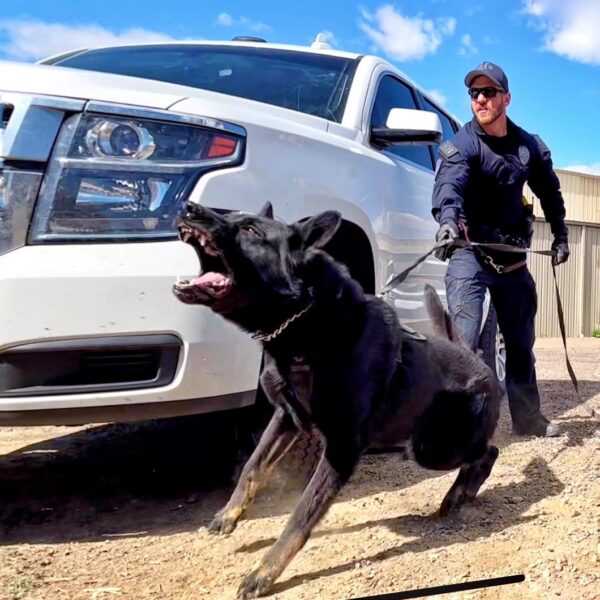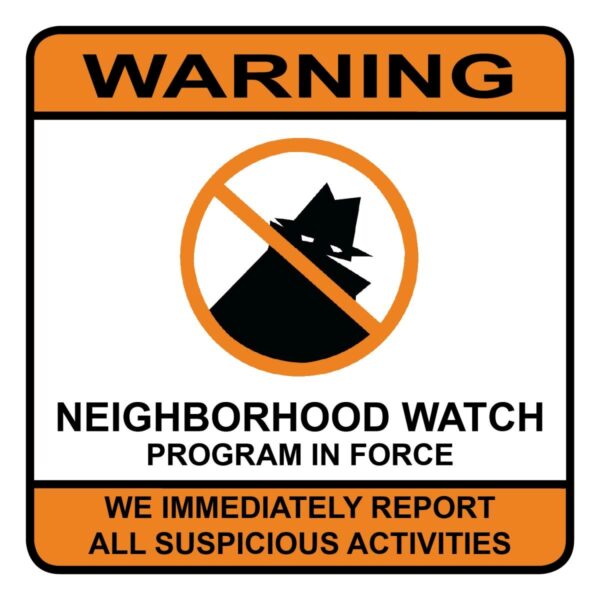
More dogs mean less crime in communities. “Man’s best friend” is just as formidable a sentry as officially certified on-duty police canines.
That should come as no surprise, though. We can all agree on the stupidity of would-be criminals. But even knuckleheads know to steer clear of properties patrolled by the obvious presence of a dog, “Beware of Dog” signs, or both.
Cops can tell you that homes with dogs are subject to theft and vandalism far less than residences without canines.
Any cop will also tell you that man’s best friend consistently aids law enforcement, especially during the midnight shift when most folks are slumbering, and the family dog(s) have the watch under control.
Time and again, police activities involving a foot pursuit, whereby the bad guy flees into the darkness and attempts to hunker down on peoples’ private property, invariably culminate in apprehension when there is a dog nearby. Barking, the tell-tale sign of a canine unsettled by something or someone, is like impromptu backup with super-sharp senses.
Dogs hear sounds of a bad guy fleeing police. They also smell the fear of the criminal on the run from justice. They bark in response. In effect, barking dogs magnetize cops to a given area.
Thus, canines living in the community play a vital role in public safety; an au natural characteristic of canines.
On midnight shift, our squad had police canines to do tracking of fugitive suspects hiding in the darkness. But when a foot chase breaks out, police canines and their assigned handlers are not necessarily already on-scene and good-to-go. Canine cops typically overhear police radio communications and ordinarily race to aid cohorts in need of a four-legged supercharged partner chomping at the bit to get involved in the caper.
You’ve likely heard or read it before: Police dogs just love to work!

(Photo courtesy of K9s United.)
In the academic journal Social Forces, a team of researchers at Ohio State University (OSU) published findings that cast the limelight on the domesticated bunch of barkers and their human chaperones, revisiting the concept of Neighborhood Watch groups acting as extra eyes and ears for law enforcement officers by comingling on the street beat, all compelled by the need to walk pet dogs.
“People walking their dogs are essentially patrolling their neighborhoods,” Ohio State University doctoral student Nicolo Pinchak said. “They see when things are not right and when there are suspect outsiders in the area. It can be a deterrent.”
“Not only did dogs turn owners into a neighborhood watch, but they also helped build trust between residents,” the Washington Examiner highlighted.
“When people are out walking their dogs, they have conversations. They pet each other’s dogs,” Pinchak said. “They learn what’s going on and can spot potential problems.”
Via SciTechDaily, “Research has shown that trust among neighbors is an important part of deterring crime, because it suggests residents will help each other when facing a threat and have a sense of ‘collective efficacy’ that they can have a positive impact on their area,” Pinchak explained.
“Results of this study showed, as expected, that neighborhoods with high levels of trust had lower levels of homicide, robbery, and aggravated assaults when compared to neighborhoods with low levels of trust.”
Pinchak et al. published their findings under the title, “Paws on the Street: Neighborhood-Level Concentration of Households with Dogs and Urban Crime”
In essence, dog-walking unites citizens out in public on a routine basis, friendships form, trust evolves, and like-minded demographics share concentrations on anomalies (suspicious persons, for example), conveying concerns to local police. At the base, though, are people walking dogs inadvertently serving as deterrents to those up to no good.
It is often said that cops can not be everywhere at once. That is true. Nationwide, less than one million cops serving roughly 333,000,000 people is a real ratio to enumerate the stark reality, and why law enforcement officers have faith in community relations to help balance justice scales. Cops relying on citizens in their respective communities, to take notice and report things that are not the norm, is a public safety co-opt mutually invested in crime prevention.
Although canines are dubbed watchdogs for an obvious reason, the OSU study emphasized the catalyst for reduced criminal activity stemmed from humans walking their dogs, thereby serving as an informal patrol deterring and displacing would-be malfeasants while also furnishing leads to on-duty cops.

(Photo courtesy of the Hillsborough County Neighborhood Watch Association.)
Throughout my police career, a handful of Crime Watch captains and/or their members contacted us about “suspicious cars” which were “parked in the same spot forever.” Every single one was a stolen auto eventually returned to its rightful owner. Locals know what belongs and what is out of place.
Per the OSU abstract, “We argue that neighborhood-level rates of households with dogs captures part of the residential street monitoring process core to [Jane] Jacobs’ hypotheses and test whether this measure is inversely associated with property and violent crime rates.”
In essence, the more dogs the greater number of dog-walkers, equating to much more community visibility and overall observation. It is a formula detested by criminals, made more formidable by the presence of dogs, lots of ‘em.
Conn Carroll wrote, “Those neighborhoods with lots of dogs had robbery rates two-thirds lower than neighborhoods with fewer dogs, and the homicide rates were half the size as well. The presence of dogs in a neighborhood had a bigger effect on crime rates than the proportion of young males in the neighborhood, residential instability, and socioeconomic status.”
The researchers waged: “This study offers suggestive evidence of crime deterrent benefits of local street monitoring and dog presence and calls attention to the contribution of pets to other facets of neighborhood social organization.” In other words, it takes a village.
One of the first in-service classes I attended as a rookie cop fresh out of field training was Crime Prevention Practices. Among the many facets taught was how to properly conduct “security surveys” on behalf of residents and merchants in the jurisdiction, making recommendations for quality lighting fixtures and optimized placement, trimming overgrown shrubbery (places of concealment), ideal installation of surveillance systems, etc. The overall goal was to diminish the chances of victimization.
Besides those features, there is always one ultimate recommendation from cops: Get a dog, give it a loving home, and witness Cujo guard your castle like it’s no one’s business.
As per the Ohio State University study, bonuses stem from humans walking dogs and taking note of community norms and irregularities…perhaps being noticed for doing so, fortuitously preempting criminal events.
“Dogs have a crime-fighting advantage over cats and other pets that don’t need walking,” Pinchak emphasized. The core purpose of any Neighborhood Watch is to multiply more assistance and focus more “eyes on the street” so that cops have a pulse on environmental details and criminals feel dissuaded.
That’s a dogma we can all embrace.